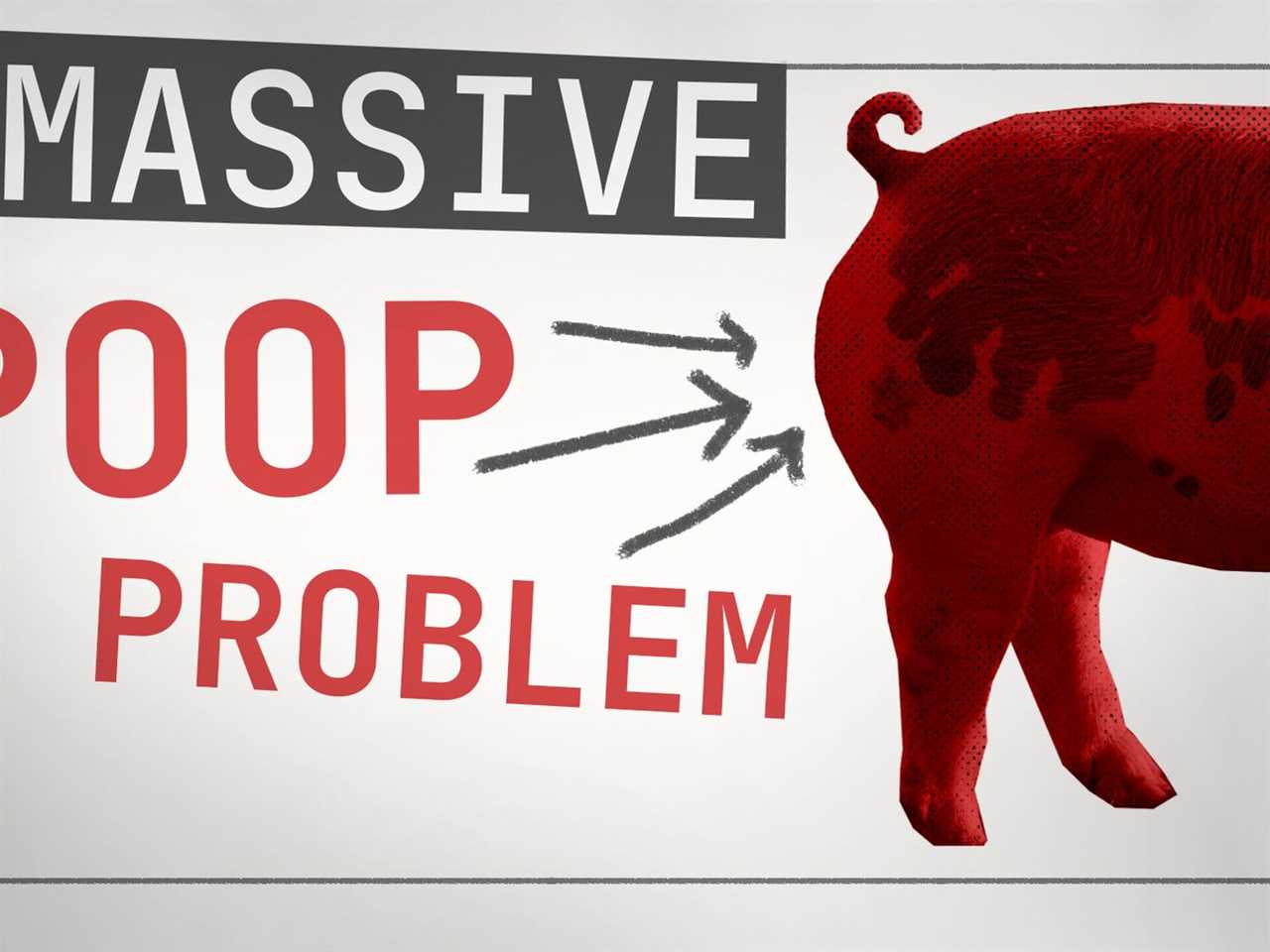
Inside North Carolina’s search for solutions for its thousands of pig manure lagoons.
When large-scale farms confine thousands of animals, it creates a problem that doesn’t exist for farms where animals graze: managing all the animal waste produced in confined spaces. This problem is especially acute for pigs. They produce so much manure that farmers end up using what’s known as a “lagoon and sprayfield system” to manage it.
For this third episode of our video series with Vox’s Future Perfect team, we went to North Carolina, a state that’s been battling the public health and environmental impact of hog lagoons for decades. The issue is especially grave in this state due to the vulnerable populations who bear the brunt of this pollution, and because hog facilities are so concentrated in such a small area.
Another feature of North Carolina that makes it more vulnerable to water contamination is its permeable, sandy soil in hog farming areas. Experts told me this area used to be swampland and was drained to make way for agriculture. This was a common land management practice in the US and is covered in this Vox video about Lake Erie, produced by my colleague Liz Scheltens.
The location of hog farms in North Carolina is related to the history of tobacco farming in the state. North Carolina is still the biggest tobacco-producing state in the US, but it used to be a much more common cash crop in eastern North Carolina. When the public health effects of smoking became clear and government programs stopped supporting it, many North Carolina farmers started to diversify their practices, including raising hogs. That’s how one of the people we interviewed for this piece, farmer Tom Butler, got into raising pigs — he used to be a tobacco farmer.
Advocates and community members are also deeply concerned about the proliferation of large-scale poultry facilities in North Carolina, which accelerated when a moratorium on new or expanded hog farms was enacted in 1997. One area of concern is the lack of state regulation and transparency about where poultry facilities are located and what they do with the dry waste from chickens. Poultry farming is also really common in the same counties with a high concentration of hog farming, and residents I spoke to expressed concern about the environmental impact of these facilities as well.
North Carolina is not the only place where the lagoon and sprayfield system exists. A lot of large-scale pig farms in the US store and dispose of waste in this way. However, in states like Iowa that experience more frequent freezing temperatures, farms store the waste in deep pits under the hog buildings. Other states require lagoons to be covered. And small-scale farmers graze their pigs. But I couldn’t find anywhere a version of a wastewater treatment plant that most advocates are calling for, aside from various pilot projects. It’s clear that changing this system would require an industry-wide sea change, led by corporations fronting the cost and by more government regulation.
We show a map from Align RNG’s website in this video that illustrates where they plan to construct a pipeline that will carry biogas from participating farms to a conditioning facility, and eventually to the state’s existing natural gas pipeline. The public information from Smithfield and Align RNG has been a source of heated controversy in North Carolina. The Southern Environmental Law Center and other organizations have asked the state for more transparency about where the farms and the pipeline are located in order to get informed public input on the project. More details about what the public perceives as secrecy involved in this project are in this story.
We reached both Align RNG and Smithfield for this story, and they both said they sought public input for the biogas project and touted the project’s potential for cutting greenhouse gas emissions. They also said that the state of North Carolina has “stringent” permit regulations that they adhere to.
In North Carolina, I interviewed two people who weren’t featured in the video. Sherri White-Williamson heads the Environmental Justice Community Action Network, or EJCAN, a nonprofit working toward water testing in the area, particularly of private wells.
I also interviewed Jeff Currie, a member of the Lumbee tribe in North Carolina, and a Waterkeeper Alliance worker whose job it is to test the Lumber River watershed for contamination. The Lumbee tribe is primarily located in Robeson County, one of the high-concentration hog farming areas we cover in the video.
Animal Charity Evaluators provided funding without editorial input for the production of this series.
Further reading:
- Vox’s Future Perfect team covered this issue here.
- And in a podcast episode, as part of their series on meat.
- A similar debate about the promises of biogas is happening in the dairy industry as well.
- The Environmental Working Group provided assistance with creating the map in the video that shows hog facilities.
- ProPublica has a more in-depth investigation into the Smithfield agreement.
- The New Yorker also covered the failures of the Smithfield agreement after Hurricane Florence caused multiple lagoons to flood.
- Here is the latest complaint against the proposed biogas project, filed by the Southern Environmental Law Center, who spoke to us for this story.
- More information on the 1995 Pulitzer Prize-winning Raleigh News & Observer series on the hog industry.
- I learned a lot from Melba Newsome’s writing and reporting on this issue for North Carolina Health News.
- Rick Dove of the Waterkeeper Alliance manages a website that tracks this issue.
You can find this video and all of Vox’s videos on YouTube.
----------------------------------------
By: Laura Bult
Title: Hog farming has a massive poop problem
Sourced From: www.vox.com/videos/2022/1/4/22866627/hog-farm-poop-lagoon-industrialized-farming
Published Date: Tue, 04 Jan 2022 17:10:00 +0000
Did you miss our previous article...
https://consumernewsnetwork.com/politics-us/2021-in-6-minutes






